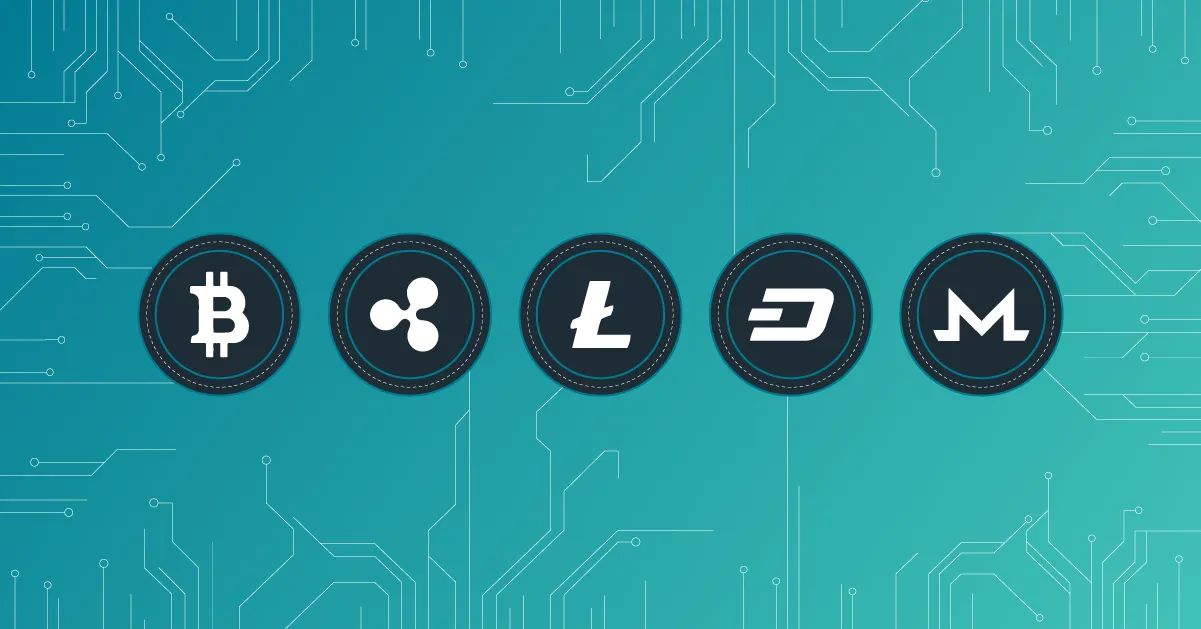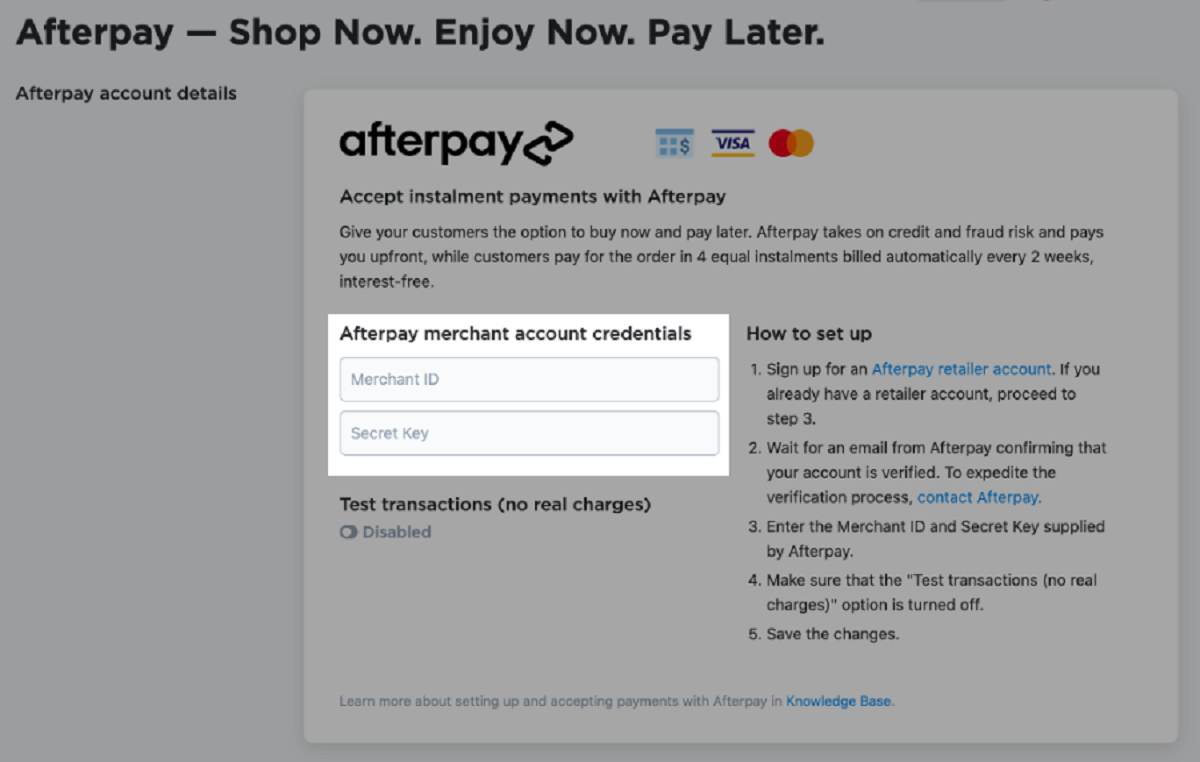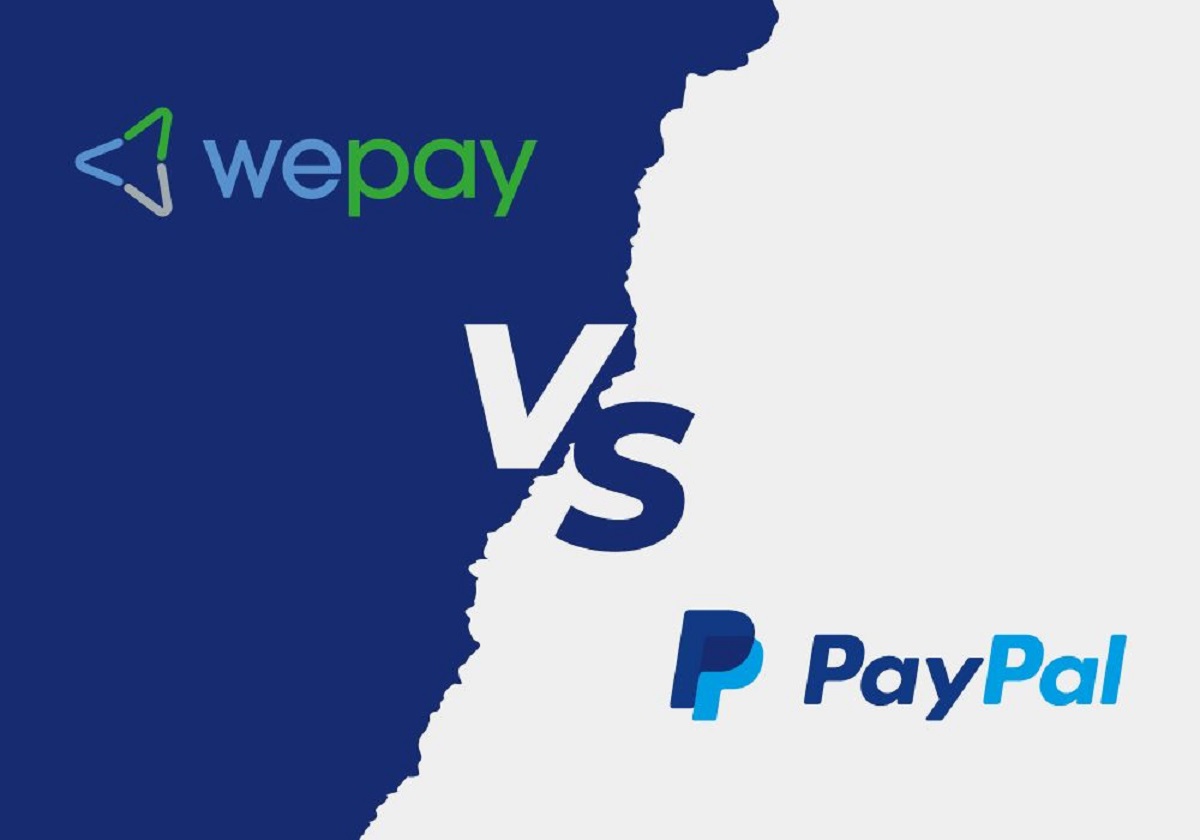Introduction
Ecommerce has transformed the way we shop and conduct business, providing convenience and accessibility to consumers and merchants alike. Traditional payment methods, however, have their limitations, such as high transaction fees, lengthy settlement times, and concerns regarding security and transparency. In recent years, the emergence of blockchain technology has offered a promising solution to these challenges.
Blockchain is a decentralized, distributed ledger that records transactions across multiple computers. It eliminates the need for intermediaries and allows for secure, transparent, and efficient peer-to-peer transactions. As a result, more ecommerce businesses are exploring the incorporation of blockchain payments into their platforms.
Blockchain payments in ecommerce offer a plethora of advantages that can revolutionize the industry. First and foremost, the enhanced security provided by blockchain technology protects both buyers and sellers from fraud and chargebacks.
Moreover, the use of blockchain payments can significantly reduce transaction fees, as it eliminates the need for third-party intermediaries and minimizes administrative costs. This benefits businesses by increasing their profit margins and enables them to offer better prices to consumers.
Another key advantage of blockchain payments is the faster settlement of transactions. Traditional payment methods often require days or even weeks to finalize a transaction, leading to delays in product delivery. With blockchain, transactions can be settled in a matter of minutes, providing a seamless and efficient purchasing experience for customers.
Blockchain also contributes to enhanced transparency within ecommerce transactions. All transactions are recorded on the blockchain ledger, which can be accessed by anyone, ensuring that all parties have access to the same information and reducing the risk of fraudulent activities.
Furthermore, blockchain payments have the potential to offer global accessibility. Traditional payment methods may be limited to specific countries or have restrictions for cross-border transactions. Blockchain payments, on the other hand, can be conducted seamlessly across borders, allowing ecommerce businesses to expand their reach and cater to a wider customer base.
Last but not least, the implementation of blockchain payments builds trust with customers. The transparency and immutability of blockchain technology create a more secure and reliable payment system, instilling confidence in buyers that their transactions are protected.
While blockchain payments in ecommerce hold tremendous potential, there are also challenges and limitations to consider. Regulatory compliance, scalability issues, and integration challenges are among the key obstacles that may need to be addressed before widespread adoption can occur.
In the following sections, we will delve deeper into the benefits of blockchain payments in ecommerce, as well as the challenges and limitations that must be overcome for successful implementation. By understanding the potential and limitations of this technology, ecommerce businesses can make informed decisions about incorporating blockchain payments into their operations.
What is Blockchain?
Blockchain is a decentralized and transparent digital ledger that records transactions across multiple computers. It is often associated with cryptocurrencies like Bitcoin, but its applications extend far beyond digital currencies. At its core, blockchain is a system for securely recording and verifying transactions.
Unlike traditional databases that are owned and maintained by a central authority, blockchain operates on a distributed network of computers, known as nodes. Each transaction, or “block,” is verified by multiple nodes before being added to the chain, creating an unalterable record of the transaction that is visible to all participants.
The key principles of blockchain are decentralization, immutability, and transparency. Decentralization means that no single entity controls the entire network, reducing the risk of manipulation or fraud. Immutability ensures that once a transaction is added to the blockchain, it cannot be altered or tampered with. Transparency allows anyone to view the transaction history, promoting trust and accountability.
Blockchain technology utilizes cryptography to secure transactions and protect data integrity. Each transaction is encrypted and linked to the previous transaction, forming a chain of blocks. This cryptographic validation ensures that the information stored on the blockchain is secure and authentic.
One of the defining features of blockchain is the consensus mechanism used to validate transactions. Traditional payment systems often rely on a central authority to verify transactions. In contrast, blockchain uses consensus algorithms, such as proof-of-work or proof-of-stake, where participants in the network agree on the validity of transactions through computational puzzles or stake ownership.
Blockchain technology has the potential to revolutionize various industries beyond finance. It enables the development of decentralized applications (DApps) and smart contracts, which are self-executing agreements that run on the blockchain. These programmable contracts eliminate the need for intermediaries and automate the execution of agreements.
By leveraging blockchain technology, businesses can benefit from increased security, reduced costs, and improved efficiency. For ecommerce, blockchain payments offer a transparent, secure, and efficient alternative to traditional payment methods.
In the following sections, we will explore the specific benefits of using blockchain payments in ecommerce and discuss the challenges and limitations associated with their implementation. Understanding the fundamentals of blockchain is crucial for ecommerce businesses looking to capitalize on the advantages it offers.
How Does Blockchain Work?
Blockchain is a technology that operates on a distributed network of computers, called nodes, and works through a series of steps to record and verify transactions. Understanding the inner workings of blockchain is essential for comprehending its potential in revolutionizing ecommerce payments.
1. Transaction Initiation: The process begins when a transaction is initiated by a participant within the network. This transaction can include various forms of digital assets, such as cryptocurrencies or digital certificates.
2. Verification: Once a transaction is initiated, it is broadcasted to the network of nodes. These nodes verify the validity of the transaction by confirming that the participant initiating the transaction has sufficient funds or authority to do so.
3. Block Creation: Verified transactions are grouped together in blocks. Each block contains a unique identifier, a reference to the previous block, and a list of verified transactions. This creates a chain of blocks, hence the name “blockchain.”
4. Consensus Mechanism: In order to add a new block to the blockchain, the nodes in the network must agree on its validity. This is achieved through a consensus mechanism, such as proof-of-work or proof-of-stake. Consensus mechanisms require participants to solve complex mathematical puzzles or stake a certain amount of cryptocurrency to validate new blocks.
5. Block Validation: Once the consensus is reached, the new block is added to the blockchain. This process ensures that all nodes in the network have a consistent and agreed-upon version of the blockchain, reducing the risk of fraud or malicious activity.
6. Encryption: Each transaction within a block is encrypted using cryptographic algorithms, making it virtually impossible to tamper with or alter the transaction information. Encryption adds an additional layer of security to the blockchain.
7. Decentralized Ledger: The blockchain ledger is replicated on every node in the network, creating a decentralized record of all transactions. This eliminates the need for a central authority to maintain and validate the ledger, increasing transparency and security.
8. Immutability: Once a block is added to the blockchain, it becomes virtually immutable. Any attempt to alter or tamper with the data recorded on the blockchain would require substantial computational power and would be easily detected by the network. Immutability ensures the integrity and reliability of the recorded transactions.
Through its decentralized and transparent nature, blockchain technology provides a secure and efficient method for conducting transactions. Its ability to record and verify transactions without the need for intermediaries or centralized control makes blockchain an ideal solution for ecommerce payments.
In the next sections, we will delve into the specific benefits of using blockchain payments in ecommerce, as well as the challenges and limitations that need to be addressed for successful implementation.
Benefits of Using Blockchain Payments in Ecommerce
Blockchain payments have the potential to revolutionize the ecommerce industry by offering a multitude of benefits for both businesses and consumers. Let’s explore some of the key advantages of using blockchain payments in ecommerce.
1. Increased Security: One of the primary advantages of blockchain payments is enhanced security. Traditional payment methods are susceptible to fraud, chargebacks, and identity theft. Blockchain technology utilizes cryptography and decentralized validation to ensure the integrity of transactions. Each transaction is encrypted and linked to the previous transaction, making it nearly impossible for malicious actors to tamper with the transaction data.
2. Reduced Transaction Fees: Blockchain payments have the potential to significantly decrease transaction fees. Traditional payment methods often involve intermediaries, such as banks or payment processors, which charge fees for their services. With blockchain payments, the need for intermediaries is eliminated, resulting in lower transaction costs. This enables ecommerce businesses to increase their profit margins or offer competitive pricing to consumers.
3. Faster Transaction Settlement: Another advantage of blockchain payments is the speed at which transactions can be settled. Traditional payment methods typically involve lengthy settlement times, with funds taking days or even weeks to clear. In contrast, blockchain payments can be settled in real-time or within a matter of minutes. This swift settlement allows for faster product delivery and an improved overall customer experience.
4. Enhanced Transparency: Blockchain technology provides a transparent record of all transactions. Every transaction is recorded on the blockchain ledger, which can be accessed by all participants in the network. This transparency eliminates discrepancies and disputes, as all parties have access to the same information. It also enhances trust between buyers and sellers, as they can verify the accuracy and authenticity of transactions.
5. Global Accessibility: Traditional payment methods may have limitations when it comes to cross-border transactions. Currency conversions, regulatory compliance, and high fees can present obstacles for international ecommerce. Blockchain payments offer a seamless solution, allowing for fast and cost-effective cross-border transactions. With blockchain, ecommerce businesses can reach a global customer base and expand their operations internationally.
6. Improved Customer Trust: By offering secure, transparent, and efficient payment options, blockchain payments build trust with customers. The decentralized nature of blockchain ensures that transactions are secure and free from fraud. Customers can have confidence that their personal and financial information is protected. Moreover, the transparency of blockchain allows customers to track and verify their transactions, enhancing their trust in the ecommerce platform.
Incorporating blockchain payments in ecommerce has the potential to revolutionize the industry by providing increased security, reduced transaction fees, faster settlement times, enhanced transparency, global accessibility, and improved customer trust. However, there are challenges and limitations that need to be addressed for effective implementation, which we will explore in the following sections.
Increased Security
Security is a paramount concern in ecommerce transactions, as both buyers and sellers need assurance that their sensitive information and funds are protected. Blockchain payments offer increased security compared to traditional payment methods, making them an attractive option for ecommerce businesses.
Blockchain technology utilizes cryptographic algorithms to encrypt transactions, ensuring that sensitive information is secure. Each transaction is linked to the previous transaction, creating a chain of blocks that form an unalterable record. This immutability makes it nearly impossible for hackers or malicious actors to tamper with the transaction data.
Additionally, blockchain payments eliminate the need for intermediaries, such as banks or payment processors, that can be susceptible to security breaches. With blockchain, payments are made directly between the buyer and seller, reducing the number of potential points of vulnerability. The decentralized nature of blockchain further enhances security, as the ledger is replicated across multiple nodes in the network, making it extremely resistant to hacking or manipulation.
One of the key features that contribute to the security of blockchain payments is the consensus mechanism. Consensus mechanisms, such as proof-of-work or proof-of-stake, require participants in the network to agree on the validity of transactions. This decentralized validation process ensures that fraudulent or unauthorized transactions are not included in the blockchain. Participants must expend computational power or stake a certain amount of cryptocurrency to validate new blocks, making it economically unfeasible for attackers to manipulate the system.
Blockchain payments also address the issue of chargebacks, which can result in significant financial loss for businesses. Chargebacks occur when a customer disputes a transaction, leading to funds being reversed back to the customer’s account. The decentralized and transparent nature of blockchain ensures that all transactions are recorded and verified, making it difficult for customers to falsely claim that a transaction did not take place. As a result, businesses can reduce the risk of chargebacks and fraudulent claims, increasing their security and protecting their revenue.
Overall, the increased security provided by blockchain payments in ecommerce offers peace of mind to both buyers and sellers. The encryption, decentralization, and consensus mechanisms employed by blockchain technology significantly reduce the risk of fraud, data breaches, and unauthorized access. By incorporating blockchain payments, ecommerce businesses can build trust with their customers and secure their transactions in an increasingly digital and interconnected world.
Reduced Transaction Fees
One of the significant advantages of implementing blockchain payments in ecommerce is the potential for reduced transaction fees. Traditional payment methods often involve intermediaries, such as banks and payment processors, which charge fees for their services. These fees can eat into the profit margins of businesses and increase costs for customers. Blockchain payments offer a solution by eliminating the need for intermediaries and associated fees.
Blockchain operates as a peer-to-peer network, allowing buyers and sellers to transact directly with each other. This removes the requirement for a third-party intermediary to facilitate and verify transactions. As a result, businesses can save on transaction fees that would typically be incurred with traditional payment methods.
By leveraging blockchain for payments, ecommerce businesses can bypass the need to pay fees to financial institutions for processing transactions. The absence of these intermediaries not only reduces costs but also enables businesses to offer more competitive pricing to customers. Lower fees mean that ecommerce merchants can maximize their profit margins or pass on the savings to consumers in the form of lower prices.
Moreover, the elimination of intermediaries also leads to faster settlement times. Traditional payment methods often involve delays in fund transfers due to the involvement of various financial institutions and their clearing processes. With blockchain payments, transactions can be settled in real-time or within minutes, decreasing the need for additional resources and reducing the associated costs.
In addition, blockchain payments can be particularly beneficial for cross-border transactions. International payments often incur significant fees, including currency conversion and intermediary charges. Blockchain payments provide a more cost-effective alternative by enabling direct peer-to-peer transfers, bypassing the lengthy and expensive traditional banking systems. This accessibility to low-cost cross-border payments can benefit both ecommerce businesses and their international customers, facilitating smoother and more affordable transactions.
Blockchain payments not only reduce transaction fees but also offer a more transparent fee structure. Traditional payment methods often involve hidden fees or unclear pricing structures, resulting in surprise charges for businesses and customers. In contrast, blockchain payments operate on a transparent and decentralized ledger, providing visibility into transaction fees. This transparency ensures that all parties have a clear understanding of the fees associated with each transaction, promoting trust and fairness.
Incorporating blockchain payments in ecommerce can significantly reduce transaction fees, leading to cost savings for businesses and more competitive pricing for customers. By eliminating intermediaries and facilitating direct peer-to-peer transactions, blockchain payments offer a cost-effective and transparent solution that can transform the way ecommerce merchants conduct their business.
Faster Transaction Settlement
Faster transaction settlement is a key advantage of incorporating blockchain payments into ecommerce platforms. Traditional payment methods often involve delays in fund transfers, which can impact the overall customer experience and hinder business operations. Blockchain payments offer a solution to this problem by enabling near-instantaneous settlement of transactions.
With blockchain technology, transactions can be processed and settled in real-time or within minutes. This rapid settlement is made possible by the decentralized nature of blockchain, where transactions are verified and recorded by multiple nodes in the network. Once a transaction is validated, it is added to a block and incorporated into the immutable blockchain ledger.
Unlike traditional payment systems that often require multiple intermediaries and manual processing, blockchain payments bypass many layers of bureaucracy. The absence of intermediaries significantly speeds up the settlement process, reducing the time it takes for parties to receive funds and for businesses to confirm payment receipt.
For ecommerce businesses, faster transaction settlement leads to increased efficiency and improved cash flow. Rather than waiting days or even weeks for funds to clear, payments can be processed and made available for use almost instantaneously. This quick access to funds allows businesses to expedite order fulfillment, accelerate the shipping process, and enhance the overall customer experience.
In addition to improving operational efficiency, faster transaction settlement offers benefits for customers as well. Buyers expect prompt confirmation of payment and timely delivery of their purchases. With blockchain payments, customers can experience nearly instantaneous settlement, reducing the time between payment and product delivery. This not only enhances customer satisfaction but also builds trust and loyalty, leading to repeat purchases and positive reviews.
Faster settlement times also play a crucial role in industries where time is of the essence, such as in the travel or event ticketing sectors. For example, by utilizing blockchain payments, airlines can simplify ticketing processes, eliminate the need for intermediaries, and settle transactions faster, allowing travelers to receive their tickets quickly and efficiently.
Blockchain payments are particularly advantageous for cross-border transactions, which often face lengthy settlement times and high fees due to multiple banking systems involved. With blockchain, cross-border payments can be settled in a matter of minutes, eliminating the need for intermediary banks and reducing the associated costs.
In summary, incorporating blockchain payments into ecommerce offers faster transaction settlement compared to traditional payment methods. This speed enhances operational efficiency, improves cash flow, ensures prompt product delivery, and enhances the overall customer experience. With its ability to enable near-instantaneous settlement, blockchain technology revolutionizes the way transactions are processed and solidifies its position as a valuable tool for ecommerce businesses.
Enhanced Transparency
Transparency is a vital aspect of any transaction, and blockchain payments provide enhanced transparency compared to traditional payment methods. The decentralized and immutable nature of blockchain technology ensures that all participants in the network have access to the same information, creating a transparent and trustworthy environment for ecommerce transactions.
With blockchain payments, every transaction is recorded on a distributed ledger, which is accessible to all participants in the network. This transparency means that every party involved can view and verify the transaction details, ensuring that there is a consensus on the validity of the transaction.
By having a shared and transparent ledger, blockchain eliminates discrepancies and disputes that often arise from information asymmetry. All parties have access to the same information, reducing the likelihood of misunderstandings or fraudulent activities. Buyers can verify that the payment has been sent, while sellers can confirm the receipt of funds.
The immutability of blockchain further enhances transparency. Once a transaction is recorded on the blockchain, it cannot be altered or tampered with. This ensures the integrity and reliability of the transaction data, as it is permanently stored on the blockchain for all participants to see. Any attempts to manipulate or change the transaction record would require a consensus from the network, making it highly improbable and easily detectable.
Transparency in blockchain payments also extends to the fee structure. Traditional payment methods often involve hidden fees or unclear pricing structures, leading to confusion and unexpected charges. In contrast, blockchain payments operate on a transparent and decentralized ledger, providing visibility into the fees associated with each transaction. This transparency enables buyers and sellers to understand exactly what fees are being charged, promoting trust and fair pricing.
Furthermore, the transparency offered by blockchain payments can help in ensuring compliance with regulations. As all transactions are recorded and visible on the blockchain, it becomes easier for businesses to demonstrate their compliance with financial regulations and report any necessary information to authorities. This increased transparency can help mitigate risks associated with money laundering and fraudulent activities.
For consumers, enhanced transparency instills confidence and trust in the ecommerce platform. They can verify the authenticity and accuracy of transactions, ensuring that their payments are being processed correctly. This transparency also allows buyers to track the progress of their orders and have a clear understanding of the payment process.
In summary, blockchain payments in ecommerce provide enhanced transparency through a decentralized and immutable ledger. By offering all participants access to the same information, blockchain ensures consensus and reduces discrepancies. The transparency of blockchain payments promotes trust, improves compliance with regulations, and enables buyers and sellers to have a clear understanding of transaction details and fees. By incorporating blockchain technology, ecommerce businesses can foster a transparent and trustworthy environment for their customers.
Global Accessibility
Blockchain payments offer a significant advantage in terms of global accessibility for ecommerce businesses. Traditional payment methods often have limitations and restrictions for cross-border transactions, making it challenging for businesses to expand their reach and cater to a global customer base. Blockchain technology overcomes these barriers by providing a seamless and efficient solution for international transactions.
One of the key benefits of blockchain payments is the ability to conduct cross-border transactions without the need for intermediaries or multiple currency conversions. Traditional payment methods often involve intermediaries such as banks, which can introduce additional fees and delays in cross-border transactions. With blockchain payments, transactions can be conducted directly between buyers and sellers, reducing the need for intermediaries and streamlining the process.
Blockchain operates on a decentralized network with a unified ledger, accessible to all participants regardless of their geographical location. This provides a level playing field for ecommerce businesses to accept payments from customers worldwide. By incorporating blockchain payments, businesses can overcome the challenges associated with international payments and tap into new markets.
Blockchain payments are not limited by national borders or currency restrictions. The use of cryptocurrencies or stablecoins enables ecommerce businesses to accept payments in different currencies without the need for extensive conversion processes. This eliminates the need to maintain separate bank accounts or establish complex currency exchange mechanisms, reducing costs and increasing efficiency.
Furthermore, blockchain technology offers faster settlement times for cross-border transactions. Traditional payment methods often involve delays due to the involvement of multiple financial institutions and their respective processes. With blockchain payments, transactions can be settled in real-time or within minutes, reducing the time required for fund transfers and increasing the speed of product delivery.
The global accessibility provided by blockchain payments also opens new opportunities for ecommerce businesses to expand their customer base. By accepting blockchain payments, businesses can cater to customers who may not have access to traditional banking systems or credit cards. This is particularly relevant in regions with underdeveloped financial infrastructure, where blockchain offers a more accessible and inclusive payment option.
In summary, blockchain payments offer global accessibility for ecommerce businesses by eliminating barriers to cross-border transactions. With reduced reliance on intermediaries and efficient settlement times, blockchain provides a seamless solution for international payments. By embracing blockchain technology, ecommerce businesses can expand their reach, tap into new markets, and serve customers from around the world.
Improved Customer Trust
Customer trust is essential for the success of any ecommerce business, and blockchain payments offer a unique opportunity to enhance trust between buyers and sellers. The transparency, security, and efficiency provided by blockchain technology contribute to building trust with customers and fostering long-lasting relationships.
One of the key advantages of blockchain payments is the transparency it offers. All transactions are recorded on a decentralized ledger, which can be accessed and verified by all participants in the network. This transparency eliminates information asymmetry and ensures that all parties have access to the same transaction data. Buyers can verify that their payment has been sent, while sellers can confirm the receipt of funds. This transparency cultivates trust by providing a clear and indisputable record of transactions.
The security measures employed by blockchain technology also play a crucial role in improving customer trust. Traditional payment methods are susceptible to fraud, chargebacks, and identity theft. However, blockchain payments utilize encryption, decentralized validation, and consensus mechanisms to protect transactions and ensure the integrity of the data. This enhanced security instills confidence in buyers that their personal and financial information is secure during the payment process.
Furthermore, the immutability of transactions recorded on the blockchain contributes to customer trust. Once a transaction is added to the blockchain, it cannot be altered or tampered with. This immutability ensures that the integrity of the transaction data remains intact, preventing any malicious manipulation. Buyers can have confidence that the details of their purchases cannot be changed after the fact, providing reassurance and peace of mind.
The efficiency of blockchain payments also enhances customer trust. Traditional payment methods often involve delays, lengthy settlement times, and complicated bureaucratic processes. With blockchain payments, transactions can be settled in real-time or within minutes, providing immediate confirmation and faster product delivery. This speed and efficiency in payment processing contribute to a positive customer experience, building trust and loyalty.
Moreover, by adopting blockchain payments, ecommerce businesses can offer a more secure and reliable payment method. Customers value security and are more likely to trust platforms that utilize advanced technologies to protect their sensitive information. By integrating blockchain payments, businesses demonstrate their commitment to ensuring secure, fraud-resistant transactions, thereby enhancing trust and credibility.
Customer trust is vital for repeat business and positive word-of-mouth recommendations. By offering secure, transparent, and efficient blockchain payments, ecommerce businesses can build trust with their customers. This trust leads to increased customer satisfaction, higher customer retention rates, and ultimately, improved business success.
Incorporating blockchain payments into ecommerce operations can revolutionize the way businesses interact with customers, fostering trust, loyalty, and long-term success.
Challenges and Limitations of Blockchain Payments in Ecommerce
While blockchain payments offer numerous advantages for ecommerce businesses, there are also several challenges and limitations that need to be considered and addressed for successful implementation. Understanding these challenges is crucial for businesses looking to incorporate blockchain payments into their ecommerce platforms.
1. Regulatory Compliance: One of the key challenges for blockchain payments in ecommerce is navigating the complex regulatory landscape. Different countries have varying regulations regarding digital currencies and financial transactions. Ecommerce businesses must ensure compliance with anti-money laundering (AML) and know your customer (KYC) regulations. Adhering to these regulations can be arduous and may require significant resources and expertise to achieve compliance.
2. Scalability Issues: Blockchain technology faces scalability challenges when it comes to handling a large volume of transactions. Current blockchain networks, such as Bitcoin and Ethereum, have limited transaction throughput, which can hinder the speed and efficiency of ecommerce transactions during peak periods. As ecommerce businesses scale and experience an increase in transaction volumes, addressing scalability becomes crucial to ensure smooth and uninterrupted payment processing.
3. Integration Challenges: Integrating blockchain payments into existing ecommerce platforms can be complex and may require significant technical expertise. Businesses must ensure seamless integration with existing payment gateways, shopping carts, and backend systems. Developing and maintaining the necessary infrastructure to support blockchain payments can require a substantial investment of time and resources.
4. Price Volatility: Cryptocurrencies, which often underpin blockchain payments, are known for their price volatility. The value of cryptocurrencies can fluctuate significantly over a short period. This volatility can create challenges for ecommerce businesses in setting consistent prices and currencies. Additionally, customers may be hesitant to use cryptocurrencies for payments, fearing that the value of their assets may decrease before the transaction is settled.
5. User Experience: Blockchain payments, especially those involving cryptocurrencies, may have a steeper learning curve for users who are not familiar with digital currencies. The process of setting up wallets, managing private keys, and understanding transaction confirmations may be unfamiliar and potentially daunting for some customers. Ecommerce businesses must invest in providing user-friendly interfaces and educational resources to ensure a smooth and intuitive payment experience for customers.
6. Energy Consumption: Blockchain networks that rely on proof-of-work consensus algorithms, such as Bitcoin, consume a significant amount of energy. The computational power required to validate transactions and secure the network contributes to substantial energy consumption. This environmental impact may raise concerns for ecommerce businesses and customers who are conscious of sustainability and carbon footprint.
Despite these challenges and limitations, it is important to note that blockchain technology continues to evolve and improve. Research and development efforts are underway to address scalability, energy consumption, and regulatory concerns. As the technology progresses, these challenges may be mitigated, making blockchain payments more accessible and beneficial for ecommerce businesses.
By understanding and proactively addressing these challenges, ecommerce businesses can harness the potential of blockchain payments while mitigating risks, ensuring compliance, and enhancing the overall payment experience for customers.
Regulatory Compliance
Regulatory compliance is a critical consideration when integrating blockchain payments into ecommerce platforms. The evolving regulatory landscape surrounding cryptocurrencies and digital transactions present challenges that businesses must navigate to ensure legal and compliant operations.
One of the primary concerns for ecommerce businesses adopting blockchain payments is compliance with anti-money laundering (AML) and know your customer (KYC) regulations. These regulations are designed to prevent illicit activities, such as money laundering and terrorist financing, and require businesses to verify the identity of their customers and monitor transaction activities. Maintaining AML and KYC compliance is crucial to establish trust and legitimacy in the eyes of regulatory authorities and financial institutions.
Each country has its own set of regulations governing digital currencies and financial transactions, making compliance a complex and multifaceted process. Ecommerce businesses operating across borders must understand and adhere to the regulations in each jurisdiction where they conduct business. Failure to comply with regulatory requirements can result in penalties, reputational damage, and potential legal consequences.
Due to the decentralized and borderless nature of blockchain, businesses must proactively monitor and ensure compliance with relevant regulations in the jurisdictions they operate. This may involve maintaining robust record-keeping practices, implementing transaction monitoring systems, and conducting thorough customer due diligence processes. By implementing effective compliance measures, businesses can safeguard against illicit activities, protect their reputation, and maintain a secure and trustworthy platform for their customers.
Moreover, the regulatory environment surrounding cryptocurrencies and blockchain technology is continually evolving. New legislation and guidelines are being introduced to address the unique challenges posed by digital currencies. Ecommerce businesses must stay updated on regulatory developments and adapt their compliance processes accordingly. Collaborating with legal and compliance experts specializing in blockchain and cryptocurrency can provide valuable guidance and ensure adherence to applicable regulations.
Engaging in open dialogue with regulatory authorities is also crucial for ecommerce businesses adopting blockchain payments. Proactive engagement allows businesses to seek clarification on regulatory requirements, gain insight into emerging regulatory trends, and contribute to the formation of a balanced regulatory framework. Close cooperation between businesses and regulatory entities enables the development of compliant and innovative solutions that build trust and foster a supportive environment for blockchain payments.
While regulatory compliance poses challenges, it is essential for the long-term sustainability and growth of blockchain-based ecommerce operations. By establishing sound compliance practices, ecommerce businesses can demonstrate transparency, build trust with regulatory authorities, financial institutions, and customers, and foster a secure and trusted ecosystem for blockchain payments.
Scalability Issues
Scalability is a significant challenge that must be addressed when implementing blockchain payments in ecommerce. Traditional blockchain networks, such as Bitcoin and Ethereum, face limitations in terms of transaction throughput and processing speed, which can impact the scalability of ecommerce operations.
Blockchain’s decentralized nature requires all transactions to be validated by multiple nodes in the network, leading to a consensus on the state of the blockchain. However, this consensus mechanism presents a scalability challenge. As the number of participants and transactions on the blockchain increases, the network can become congested, resulting in slower transaction confirmation times and higher fees.
One of the scalability concerns is the limited number of transactions per second that blockchain networks can handle. For example, Bitcoin can process around 7 transactions per second, while Ethereum can handle approximately 15-20 transactions per second. These transaction limits are significantly lower compared to the high throughput requirements of large-scale ecommerce platforms.
As ecommerce businesses grow and experience a surge in transaction volumes during peak periods, scalability becomes crucial to ensure smooth payment processing and uninterrupted customer experiences. Without addressing scalability, blockchain networks may struggle to keep up with the increasing demand, leading to delays, higher fees, and potential bottlenecks.
To overcome scalability issues, various solutions are being explored. One approach is the implementation of layer-two scaling solutions, such as payment channels or sidechains. These solutions enable off-chain transactions that reduce the burden on the main blockchain, increasing transaction throughput and reducing fees. By moving a significant volume of transactions off the main chain, scalability can be significantly improved.
Another approach is the development of alternative consensus mechanisms that prioritize scalability, such as proof-of-stake (PoS) or directed acyclic graph (DAG) algorithms. PoS mechanisms, for example, offer higher transaction throughput and energy efficiency compared to the energy-intensive proof-of-work (PoW) consensus used by Bitcoin.
Furthermore, advancements in blockchain technology, such as sharding and state channel networks, hold promise for improving scalability. Sharding involves dividing the blockchain’s data into smaller, more manageable parts, allowing for parallel processing of transactions. State channel networks enable the execution of numerous transactions off-chain, reducing the strain on the main blockchain and improving scalability.
It is worth noting that scalability is an ongoing challenge, and the development and implementation of scalable solutions require time, research, and testing. Ecommerce businesses must consider the scalability limitations of existing blockchain networks and assess the suitability of these networks for their transactional needs.
Addressing scalability issues requires a collaborative effort from developers, researchers, and businesses to explore and adopt innovative solutions. By implementing scalable blockchain networks or leveraging off-chain solutions, ecommerce businesses can ensure that their blockchain payment systems can handle high transaction volumes, supporting seamless and efficient payment experiences for customers.
Integration Challenges
Integrating blockchain payments into existing ecommerce platforms can present various challenges that businesses must overcome to ensure seamless implementation. These integration challenges arise from the unique characteristics of blockchain technology and the need to integrate with existing payment gateways, shopping carts, and backend systems.
One of the key integration challenges is the technical complexity associated with blockchain implementations. Blockchain technology requires businesses to set up and maintain a network of nodes to validate and record transactions. Developing the necessary infrastructure and expertise to support blockchain payments can be demanding and time-consuming. Businesses need to ensure compatibility and interoperability between their existing systems and the blockchain network, which may involve significant technical expertise and development resources.
Additionally, compatibility with existing payment gateways and shopping cart systems is crucial for a seamless customer experience. Integration with these systems allows businesses to process blockchain payments alongside traditional payment methods. Existing payment gateways may need modification or custom development to accommodate blockchain payment integration. Collaboration with payment gateway providers, shopping cart developers, and third-party service providers is necessary to ensure successful integration of blockchain payments.
Moreover, ensuring the continuity and synchronization of data across multiple systems poses integration challenges. Ecommerce platforms rely on backend systems, such as inventory management, order processing, and customer relationship management (CRM) systems, to streamline operations. These backend systems need to be compatible with blockchain technology to accurately process and record transactions. A seamless flow of data between the blockchain network and the backend systems is essential to maintain accurate records and prevent data inconsistencies.
Another integration challenge is the synchronization of order and payment information for efficient order fulfillment. Ecommerce businesses often rely on real-time updates of inventory levels, order statuses, and payment information to ensure timely and accurate order processing. Integrating blockchain payments with inventory management, order management, and fulfillment systems requires careful synchronization of data to avoid discrepancies or delays in order processing.
Furthermore, user experience plays a crucial role in the successful integration of blockchain payments. Businesses must ensure that the payment process is intuitive, seamless, and secure for customers. The integration of blockchain wallets, private key management, and transaction confirmations should be streamlined and user-friendly. Providing clear instructions, tutorials, and support materials can help customers navigate the new payment method and build trust in the technology.
Overall, integrating blockchain payments into existing ecommerce platforms requires addressing technical complexities, ensuring compatibility with payment gateways and backend systems, synchronizing data, and providing a seamless user experience. Collaboration between internal technical teams, third-party service providers, and blockchain developers is essential to overcome these integration challenges and establish a robust and efficient blockchain payment system.
Conclusion
Blockchain payments have the potential to revolutionize the ecommerce industry, offering enhanced security, reduced transaction fees, faster settlement times, improved transparency, global accessibility, and improved customer trust. However, businesses must navigate challenges and limitations, such as regulatory compliance, scalability issues, integration challenges, and user adoption concerns.
Regulatory compliance is crucial for the successful implementation of blockchain payments. Businesses must ensure adherence to AML and KYC regulations to establish trust and legitimacy. Staying updated with evolving regulatory frameworks and engaging in dialogue with regulatory authorities are essential steps to ensure compliance.
Scalability issues present a challenge for blockchain payments in ecommerce. Current blockchain networks have limitations in terms of transaction throughput and processing speed. Solutions such as layer-two scaling, alternative consensus mechanisms, and advancements in blockchain technology help address scalability challenges.
Integration challenges arise from the technical complexity of blockchain implementations and the need to integrate with existing payment gateways, shopping carts, and backend systems. Collaboration with technical teams and service providers is necessary to ensure seamless integration and synchronization of data.
User adoption, especially for those unfamiliar with cryptocurrencies, can pose a challenge. Businesses must prioritize user-friendly interfaces, educational resources, and a smooth payment experience to facilitate customer acceptance of blockchain payments.
Despite these challenges, the numerous advantages of blockchain payments make them a promising option for ecommerce businesses. Enhanced security protects against fraud and chargebacks, reduced transaction fees increase profit margins, faster settlement times improve operational efficiency, enhanced transparency builds trust, global accessibility unlocks new markets, and improved customer trust leads to customer loyalty.
By carefully addressing challenges, businesses can harness the potential of blockchain payments to streamline ecommerce operations, offer innovative payment options, and provide secure and efficient transactions for their customers. With continued advancements and industry collaboration, blockchain payments have the potential to reshape the future of ecommerce, paving the way for a more secure, transparent, and inclusive digital economy.

























